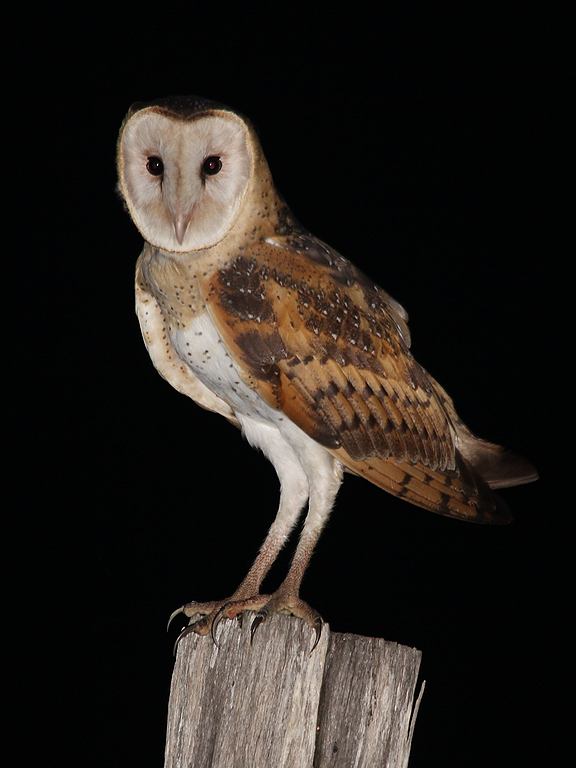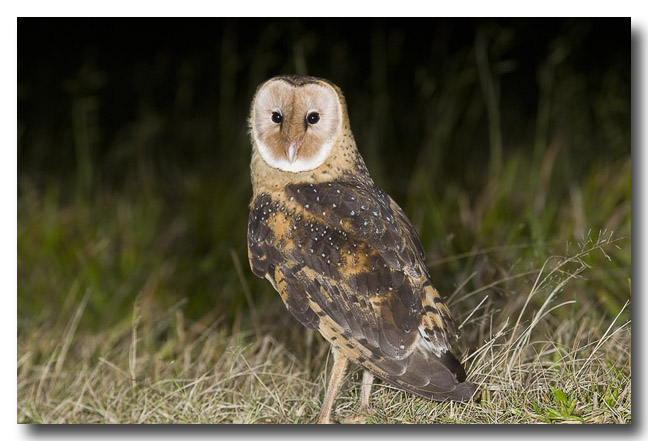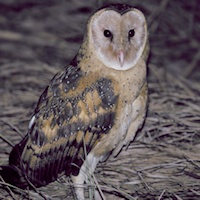
Tyto longimembris
SUBFAMILY
Tytoninae
TAXONOMY
Strix longimembris Jerdon, 1839, India. Five or six subspecies
recognized. Forms a species complex with the similar African
grass owl (T. capensis), with which sometimes regarded as conspecific.
OTHER COMMON NAMES
English: Grass owl; French: Effraie de prairie; German:
Graseule; Spanish: Lechuza Patilarga.
PHYSICAL CHARACTERISTICS
Male 13–14 in (32–36 cm), 0.6–0.8 lb (265–375 g); female
14–15 in (35–38 cm), 0.7–1.3 lb (320–582 g). Small, pale or
dark owl with small eyes set in rather long, square facial disc,
long bare legs. Mottled brown and buff dorsally, underside
white or buff, finely spotted. Female larger and darker. Juvenile
darker, with downy head and thighs when first fledged.
DISTRIBUTION
One subspecies from India through Indonesia to Australia; one
subspecies in Indochina and eastern China; one subspecies in
Taiwan; one subspecies in the Philippines; and one or two subspecies
in New Guinea.
HABITAT
Rank grassland, heath, crops, and wetland verges of rushes and
reeds.
BEHAVIOR
Nocturnal and crepuscular, rarely diurnal. Solitary, or in loose
aggregations when prey is abundant. Roosts, solitarily or communally,
in dense ground cover. Resident, but also dispersive
and irruptive. Territorial when breeding, defending the nesting
area with trilling calls and soft screeches. Up to 40 pairs of
grass owls may nest in 0.2 mi2 (0.4 km2, with as little as 55
yards (50 m) between neighboring nests.
FEEDING ECOLOGY AND DIET
Preys mostly on rodents, detected by watching and listening
from low searching flight.
REPRODUCTIVE BIOLOGY
Monogamous. Lays in autumn and winter. Nest is a scrape or
pad on the ground, under covering vegetation. Clutch is 3–8
eggs, incubated for 31 days. Can run and leave the nest at 4–5
weeks, fully fledged and fly at two months.
CONSERVATION STATUS
Not globally threatened. Widespread and uncommon to rare,
although locally common in coastal eastern Australia during
times of abundant prey. Listed on Appendix II of CITES.
SIGNIFICANCE TO HUMANS
In Australia has become a flagship species, as a destroyer of rodents
in sugar cane.
Other popular Animals
Photo Gallery of - Eastern grass owl




 Animalia Life
Animalia Life